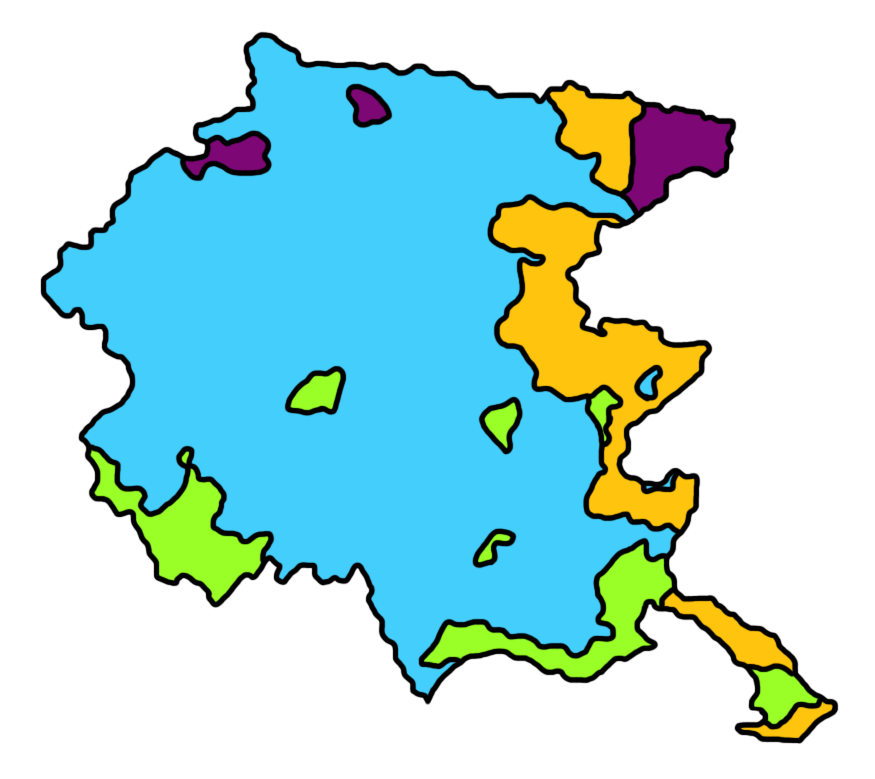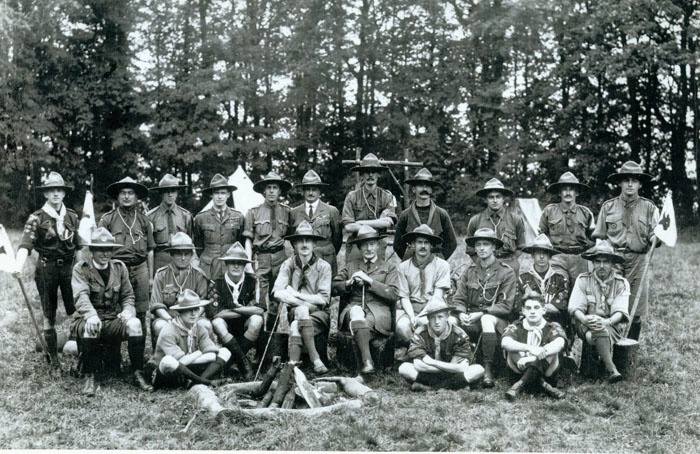|
AGESCI
The ''Associazione Guide e Scouts Cattolici Italiani'' ( en, Association of Italian Catholic Guides and Scouts, italic=yes, link=yes, AGESCI) is a Catholic Scouting and Guiding association in Italy. It is coeducational and has 183,925 members, including 33,268 leaders (of whom 2,095 priests), 1,933 local groups and 6,287 units, making it the country's largest Scout association. AGESCI was formed in 1974 upon the merger of the '' Associazione Scouts Cattolici Italiani'' (ASCI, founded in 1916) and the '' Associazione Guide Italiane'' (AGI, founded in 1943). Some ASCI and AGI leaders, who had disagreed with the merger (and, above all, opposed the principle of coeducation) and had refused to join AGESCI, formed the '' Associazione Italiana Guide e Scouts d'Europa Cattolici'' (AIGSEC/FSE) in 1976, along with disgruntled members of the early AGESCI. Since 1986, AGESCI has formed, along with the 12,000-strong non-denominational '' Corpo Nazionale Giovani Esploratori ed Esploratric ... [...More Info...] [...Related Items...] OR: [Wikipedia] [Google] [Baidu] |
Südtiroler Pfadfinderschaft
The Südtiroler Pfadfinderschaft ( en, South Tyrolean Scout Association), abbreviated as SP, is the Roman Catholic Scout association of the German minority of the Italian province of South Tyrol. The association is coeducational and has 600 members in seven troops. It is affiliated to the Associazione Guide e Scouts Cattolici Italiani (AGESCI), is strongly connected to Pfadfinder und Pfadfinderinnen Österreichs and Slovenian Catholic Girl Guides and Boy Scouts Association Scouting organizations, and maintains some contact with the Deutsche Pfadfinderschaft Sankt Georg. The association owns two campsites in the province. History Scouting within the German-speaking minority grew out of Roman Catholic youth groups (''Katholische Jungschar''). In 1969-1970 Scouting became a part of the programme of these groups. A pioneer of Scouting was the priest Dean Georg Peer. He participated in seminars of the DPSG, and included Scouting in leadership training of Jungschar afterwards. The ... [...More Info...] [...Related Items...] OR: [Wikipedia] [Google] [Baidu] |
Italian Scout Federation
The Italian Scout Federation (FIS, ''Federazione Italiana dello Scautismo'') is the national Scouting and Guiding federation of Italy. Scouting and Guiding in Italy started in 1910, the Boy Scouts were among the charter members of the World Organization of the Scout Movement in 1922, the Girl Guides joined the World Association of Girl Guides and Girl Scouts in 1948. The federation serves 102,778 Scouts (as of 2011) and 84,303 Guides (as of 2008). History The FIS was founded in 1986 after the merger of ''Federazione Esploratori Italiani'' (Boy Scouts branch, established in 1944 and WOSM affiliated) and ''Federazione Italiana Guide Esploratrici'' (Girl Guides branch, established in 1945 and WAGGGS affiliated). Members The members of the federation are * Associazione Guide e Scouts Cattolici Italiani (AGESCI, ''Italian Catholic Guide and Scout Association'', coed) * Corpo Nazionale Giovani Esploratori ed Esploratrici Italiani (CNGEI, ''National Boy and Girl Scout Corps'', int ... [...More Info...] [...Related Items...] OR: [Wikipedia] [Google] [Baidu] |
Corpo Nazionale Giovani Esploratori Ed Esploratrici Italiani
The ''Corpo Nazionale Giovani Esploratori ed Esploratrici Italiani'' (translation: National Corps of Italian Scouts and Guides, CNGEI) is a coeducational and non-denominational Scouting and Guiding association in Italy. CNGEI was founded by Carlo Colombo (1869–1918), a Piedmontese physician, as a male-only organization in 1913 and integrated the female ''Unione delle Giovinette Esploratrici Italiane'' (UNGEI) in 1976. It is the oldest among Italian Scout associations and the third by membership, with about 13,500 members. Along with the 184,000-strong ''Associazione Guide e Scouts Cattolici Italiani'' (AGESCI), CNGEI forms the Italian Scout Federation (FIS), Italy's national member of the World Organization of the Scout Movement (WOSM) and the World Association of Girl Guides and Girl Scouts (WAGGGS). CNGEI, whose guiding principles are "secularity" (i.e. "independen efrom any religious creed and political ideologies"), "co-education", "associative democracy", "adult choice" a ... [...More Info...] [...Related Items...] OR: [Wikipedia] [Google] [Baidu] |
Associazione Italiana Guide E Scouts D'Europa Cattolici
The ''Associazione Italiana Guide e Scouts d'Europa Cattolici'' (translation: Italian Association Catholic Guides and Scouts of Europe, AIGSEC), better known as ''Federazione dello Scautismo Europeo'' (Federation of European Scouting, FSE) or ''Scouts d'Europa'' (Scouts of Europe), is a Catholic Scouting and Guiding association in Italy. Formed in 1976, AIGSEC includes 20,105 members, 203 local groups and 1,361 units, making it the second-largest organisation of that kind in the country, second only to the ''Associazione Guide e Scouts Cattolici Italiani'' (AGESCI), born by the merger of the ''Associazione Scouts Cattolici Italiani'' (ASCI) with the ''Associazione Guide Italiane'' (AGI) in 1974. AIGSEC was founded two years later by former leaders of ASCI and AGI, along with some disgruntled members of AGESCI. AIGSEC is the second-largest member of the International Union of Guides and Scouts of Europe The International Union of the Guides and Scouts of Europe - Federation of ... [...More Info...] [...Related Items...] OR: [Wikipedia] [Google] [Baidu] |
Associazione Guide Italiane
The ''Associazione Guide Italiane'' (Association of Italian Guides, AGI) was a Catholic Girl Scouting association active in Italy, founded in 1943. In 1974, AGI merged with the ''Associazione Scouts Cattolici Italiani'' (ASCI), its male counterpart, started in 1916, to form the ''Associazione Guide e Scouts Cattolici Italiani'' (AGESCI), one of the first co-educational organizations in world Scouting. Many AGI leaders who disagreed with the merger (and the principle of co-education) formed the ''Associazione Italiana Guide e Scouts d'Europa Cattolici'' (AIGSEC) in 1976, along with former leaders of ASCI and disgruntled members of AGESCI.VV.AA., ''Guidismo, una proposta per la vita. Storia dell'AGI Associazione guide italiane 1943-1974'', Fiordaliso, Rome 2002 - Mario Sica, ''Storia dello scautismo in Italia'', Fiordaliso, Rome 2006 See also *Scouting and Guiding in Italy Scouting and Guiding in Italy consists of several associations and federations, including more than 225,000 ... [...More Info...] [...Related Items...] OR: [Wikipedia] [Google] [Baidu] |
Associazione Scouts Cattolici Italiani
The ''Associazione Scouts Cattolici Italiani'' (Association of Italian Catholic Scouts, ASCI) was a Catholic Scouting association active in Italy from 1916 to 1974, while being suspended under Fascism. In 1974, after a long debate, ASCI was merged with the ''Associazione Guide Italiane'' (AGI), its female counterpart, started in 1943, to form the ''Associazione Guide e Scouts Cattolici Italiani'' (AGESCI), one of the first coeducational organizations in world Scouting. Many ASCI leaders who disagreed with the merger (and the principle of coeducation) formed the ''Associazione Italiana Guide e Scouts d'Europa Cattolici'' (AIGSEC) in 1976, along with former leaders of AGI and disgruntled members of AGESCI. See also *Scouting and Guiding in Italy Scouting and Guiding in Italy consists of several associations and federations, including more than 225,000 male Scouting, Scouts and female Girl Guides, Guides. Next to Scouting and Guiding in Germany, Germany, Scouting and Guiding in Fr ... [...More Info...] [...Related Items...] OR: [Wikipedia] [Google] [Baidu] |
Slovenska Zamejska Skavtska Organizacija
The ''Slovenska Zamejska Skavtska Organizacija'' (Slovene Minority Scout Organization, SZSO) is a Catholic Scouting and Guiding association serving Slovenes in Friuli-Venezia Giulia, Italy. SZSO is affiliated to the ''Associazione Guide e Scouts Cattolici Italiani'' (AGESCI), the largest Scout association in the country. SZSO is affiliated to the ZSKSS (Združenje slovenskih katoliških skavtinj in skavtov), Scout association in Slovenia Slovenia ( ; sl, Slovenija ), officially the Republic of Slovenia (Slovene: , abbr.: ''RS''), is a country in Central Europe. It is bordered by Italy to the west, Austria to the north, Hungary to the northeast, Croatia to the southeast, and ... also, having special agreement about mutual cooperation. SZSO, whose first group was organized in 1951, was officially founded in 1976. References {{Reflist External linksOfficial website Scouting and Guiding in Italy Youth organizations established in 1976 ... [...More Info...] [...Related Items...] OR: [Wikipedia] [Google] [Baidu] |
South Tyrol
it, Provincia Autonoma di Bolzano – Alto Adige lld, Provinzia Autonoma de Balsan/Bulsan – Südtirol , settlement_type = Autonomous province , image_skyline = , image_alt = , image_caption = , image_flag = Flag_of_South_Tyrol.svg , flag_alt = , image_shield = Suedtirol CoA.svg , shield_size = x100px , shield_alt = Coat of arms of Tyrol , anthem = , image_map = Bolzano in Italy.svg , map_alt = , map_caption = Map highlighting the location of the province of South Tyrol in Italy (in red) , coordinates = , coordinates_footnotes = , subdivision_type = Country , subdivision_name = Italy , subdivision_type1 = R ... [...More Info...] [...Related Items...] OR: [Wikipedia] [Google] [Baidu] |
Pope John Paul II
Pope John Paul II ( la, Ioannes Paulus II; it, Giovanni Paolo II; pl, Jan Paweł II; born Karol Józef Wojtyła ; 18 May 19202 April 2005) was the head of the Catholic Church and sovereign of the Vatican City State from 1978 until his death in April 2005, and was later canonised as Pope Saint John Paul II. He was elected pope by the second papal conclave of 1978, which was called after John Paul I, who had been elected in August to succeed Pope Paul VI, died after 33 days. Cardinal Wojtyła was elected on the third day of the conclave and adopted the name of his predecessor in tribute to him. Born in Poland, John Paul II was the first non-Italian pope since Adrian VI in the 16th century and the second-longest-serving pope after Pius IX in modern history. John Paul II attempted to improve the Catholic Church's relations with Judaism, Islam, and the Eastern Orthodox Church. He maintained the church's previous positions on such matters as abortion, artificia ... [...More Info...] [...Related Items...] OR: [Wikipedia] [Google] [Baidu] |
Slovene Minority In Italy
Slovene minority in Italy ( it, Minoranza slovena in Italia, sl, Slovenska manjšina v Italiji), also known as Slovenes in Italy ( it, Sloveni in Italia, sl, Slovenci v Italiji) is the name given to Italian citizens who belong to the autochthonous Slovene ethnic and linguistic minority living in the Italian autonomous region of Friuli – Venezia Giulia. The vast majority of members of the Slovene ethnic minority live in the Provinces of Trieste, Gorizia, and Udine. Estimates of their number vary significantly; the official figures show 52,194 Slovenian speakers in Friuli-Venezia Giulia, as per the 1971 Census, but Slovenian estimates speak of 83,000 to 100,000 people.Zupančič, Jernej (author), Orožen Adamič, Milan (photographer), Filipič, Hanzi (photographer): ''Slovenci po svetu''. In publication: ''Nacionalni atlas Slovenije'' (Kartografsko gradivo) / Inštitut za geografijo, Geografski inštitut Antona Melika. Ljubljana: Rokus, 2001. The Slovene minority in Italy enj ... [...More Info...] [...Related Items...] OR: [Wikipedia] [Google] [Baidu] |
Wood Badge
Wood Badge is a Scouting leadership programme and the related award for adult leaders in the programmes of Scout associations throughout the world. Wood Badge courses aim to make Scouters better leaders by teaching advanced leadership skills, and by creating a bond and commitment to the Scout movement. Courses generally have a combined classroom and practical outdoors-based phase followed by a Wood Badge ''ticket'', also known as the project phase. By "working the ticket", participants put their newly gained experience into practice to attain ticket goals aiding the Scouting movement. The first Wood Badge training was organized by Francis "Skipper" Gidney and lectured at by Robert Baden-Powell and others at Gilwell Park (United Kingdom) in September 1919. Wood Badge training has since spread across the world with international variations. On completion of the course, participants are awarded the Wood Badge beads to recognize significant achievement in leadership and direc ... [...More Info...] [...Related Items...] OR: [Wikipedia] [Google] [Baidu] |



